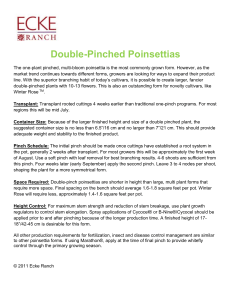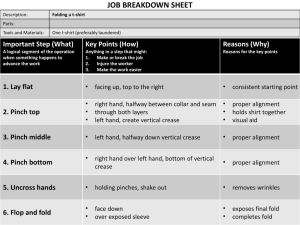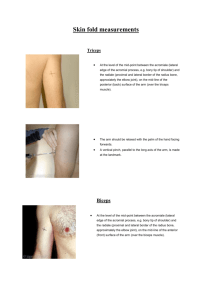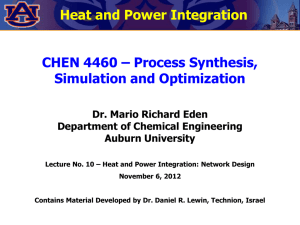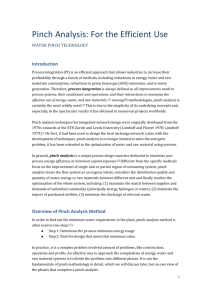Document
advertisement
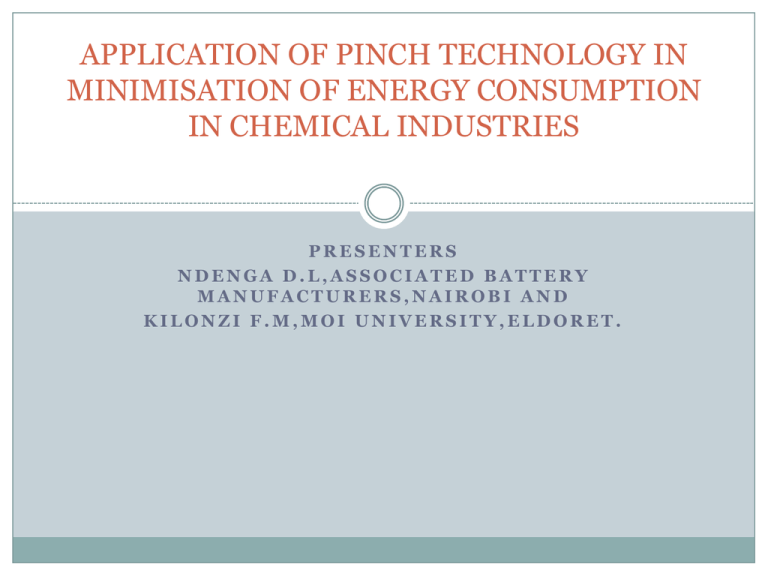
APPLICATION OF PINCH TECHNOLOGY IN MINIMISATION OF ENERGY CONSUMPTION IN CHEMICAL INDUSTRIES PRESENTERS NDENGA D.L,ASSOCIATED BATTERY MANUFACTURERS,NAIROBI AND KILONZI F.M,MOI UNIVERSITY,ELDORET. ENVIRONMENT & NEW CONSTITUTION In the new constitution Environmental rights have been elevated to Constitutional /Fundamental Rights, now enshrined in the Bill of Rights. The principle of sustainable development has since been entrenched in Article 10 2(d) of the Constitution as one of the National values and principles of governance. ENVIRONMENT & NEW CONSTITUTION cont This paper looks at how Pinch Technology can be used to reduce; Green House Gas Emissions Industrial Energy Consumption PRESENTATION OUTLINE 1.ENVIRONMENT AND NEW CONSTITUTION 2.INTRODUCTION 2. PINCH ANALYSIS CONCEPTS 3. PROCESS HEAT EXCHANGE ANALYSIS 4.COST IMPLICATION OF ENERGY RECOVERY 6. APPLICATION OF PINCH CONCEPT IN CHEMICAL INDUSTRIES. INTRODUCTION Pinch technology is a process integration technique and a powerful way to optimize the process design, yielding results superior than achievable by using conventional optimization of processes in isolation, tends to optimize the system (a collection of interrelated processes and unit operations) as a whole. Application of pinch technology in the Chemical and Process industry has provided innovative ways to reduce the energy consumption in Chemical and Process Industries. INTRODUCTION Reduced energy consumption is one of the beneficial aspects of the pinch technology. Other benefits include correct integration of steam turbines, cooptimization of energy and capital cost, identification of the most appropriate process changes and increased plant flexibility. This approach provides overall process designs that are intrinsically environmentally friendly. PINCH ANALYSIS CONCEPTS The majority of process plants contain a number of streams which need either to be heated or cooled (known respectively as cold streams and hot streams). It is often immediately apparent that some of the heating and cooling can be carried out by heat recovery between one or more of the hot streams and one or more of the cold streams. On most of these plants, it is also apparent that some heating and some cooling are actually being carried out by thermal utilities, eg process steam, cooling water etc which results in a net energy cost to the site. PINCH ANALYSIS CONCEPTS cont: We should ask ourselves the following questions: 1. What is the maximum amount of heat which can be recovered, ie what is the minimum amount of (paid for) heating and/or cooling required? 2.What configuration of heat exchangers between hot streams and cold streams is required in order to achieve the maximum amount of heat recovery? The Golden rules of PA are Don't transfer heat across the pinch; Don't use a hot utility below the pinch; Don't use a cold utility above the pinch PROCESS HEAT EXCHANGE ANALYSIS Heat exchangers work on the principle that heat flows from high temperature to low temperature( Second Law of Thermodynamics). If two process streams are separated by a thermally conducting surface, heat will flow from the hot stream to the cold stream. Fig 1 Figure 2 The composite curves for heat integration allows targets for hot and cold utilities to be set. COST IMPLICATION OF ENERGY RECOVERY Fig 3: The trade-off between energy and capital costs gives the optimum ΔTmin for minimum cost in new designs PROCESS HEAT EXCHANGE ANALYSIS cont Pinch is the temperature region in a process where the hot and cold composites are closest together. It is therefore the region where heat recovery is most constrained and it is most important to ensure that heat transfer duties are correctly configured. APPLICATION OF PINCH CONCEPT IN CHEMICAL INDUSTRIES It can be used for the initial design of the process 2. As a tool to guide process modifications due to changing circumstances(financial, process or environmental). 3. Can be used for targeting energy usage in a plant. 4. Used to calculate total annual cost of utilities and capital cost of heat exchanger network 1. CONCLUSION • Pinch Technology can thus be used to Reduce Energy Consumption in Chemical Industry and Green House Gas Emissions THANKYOU FOR YOUR AUDIENCE!!

